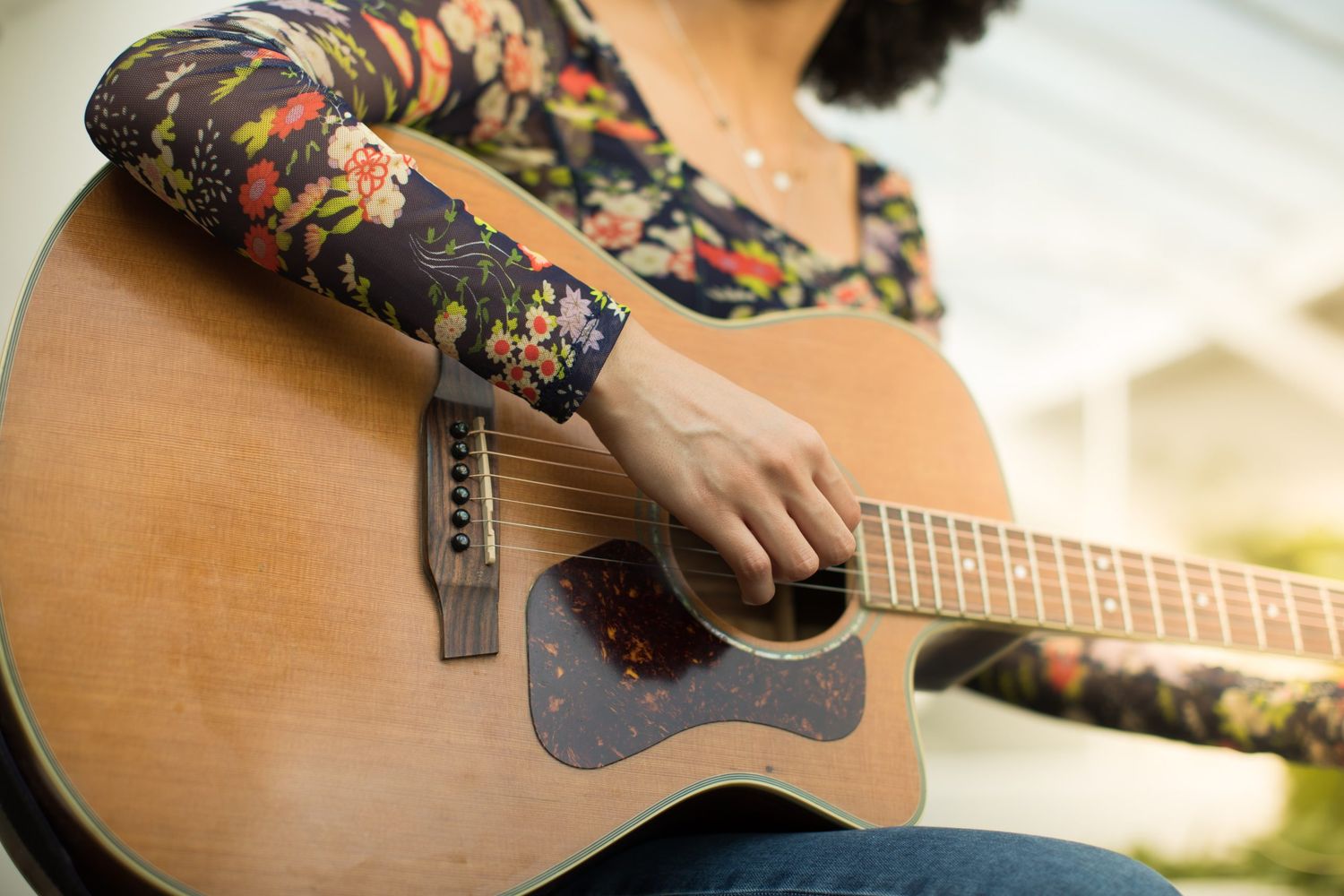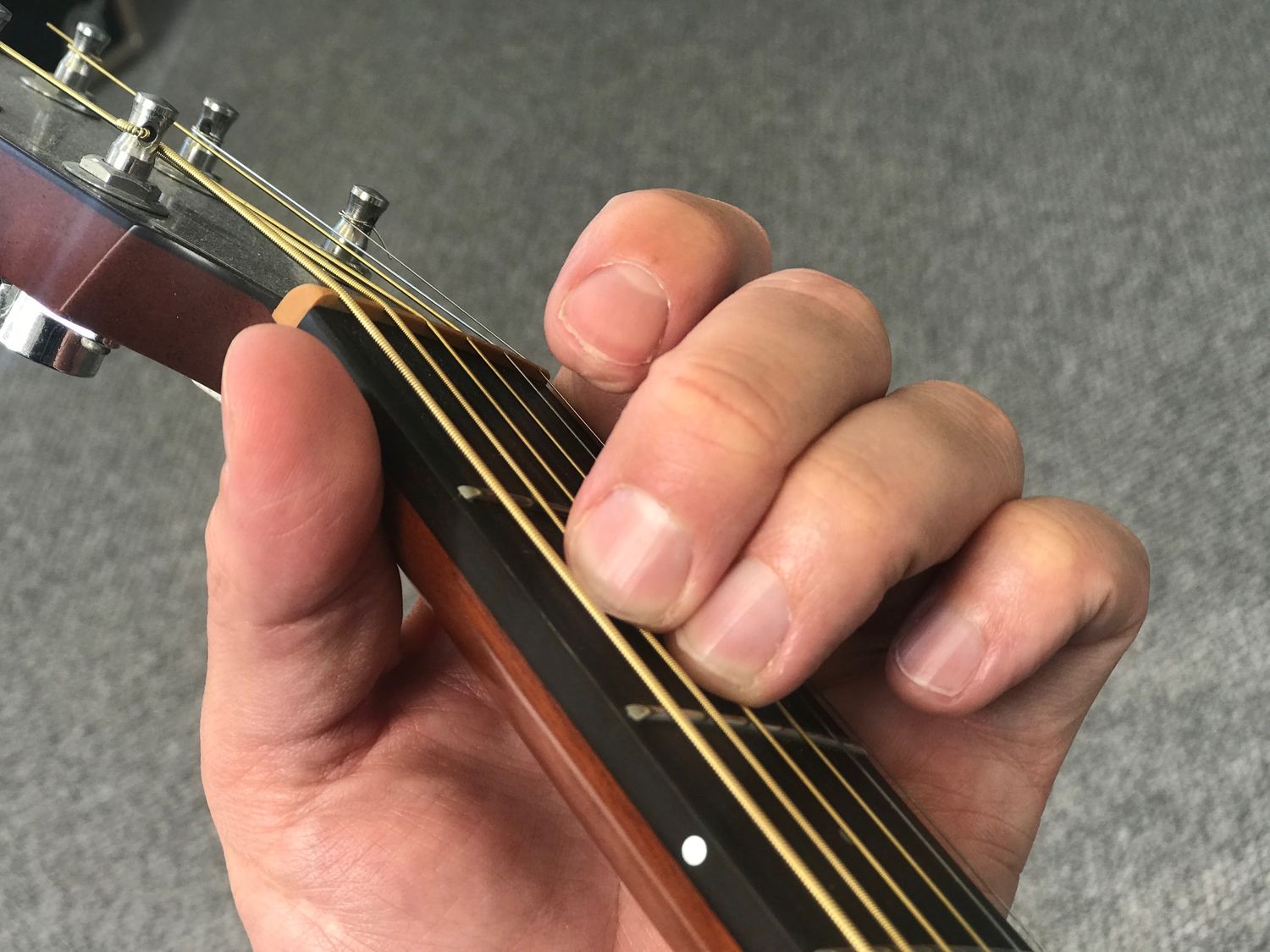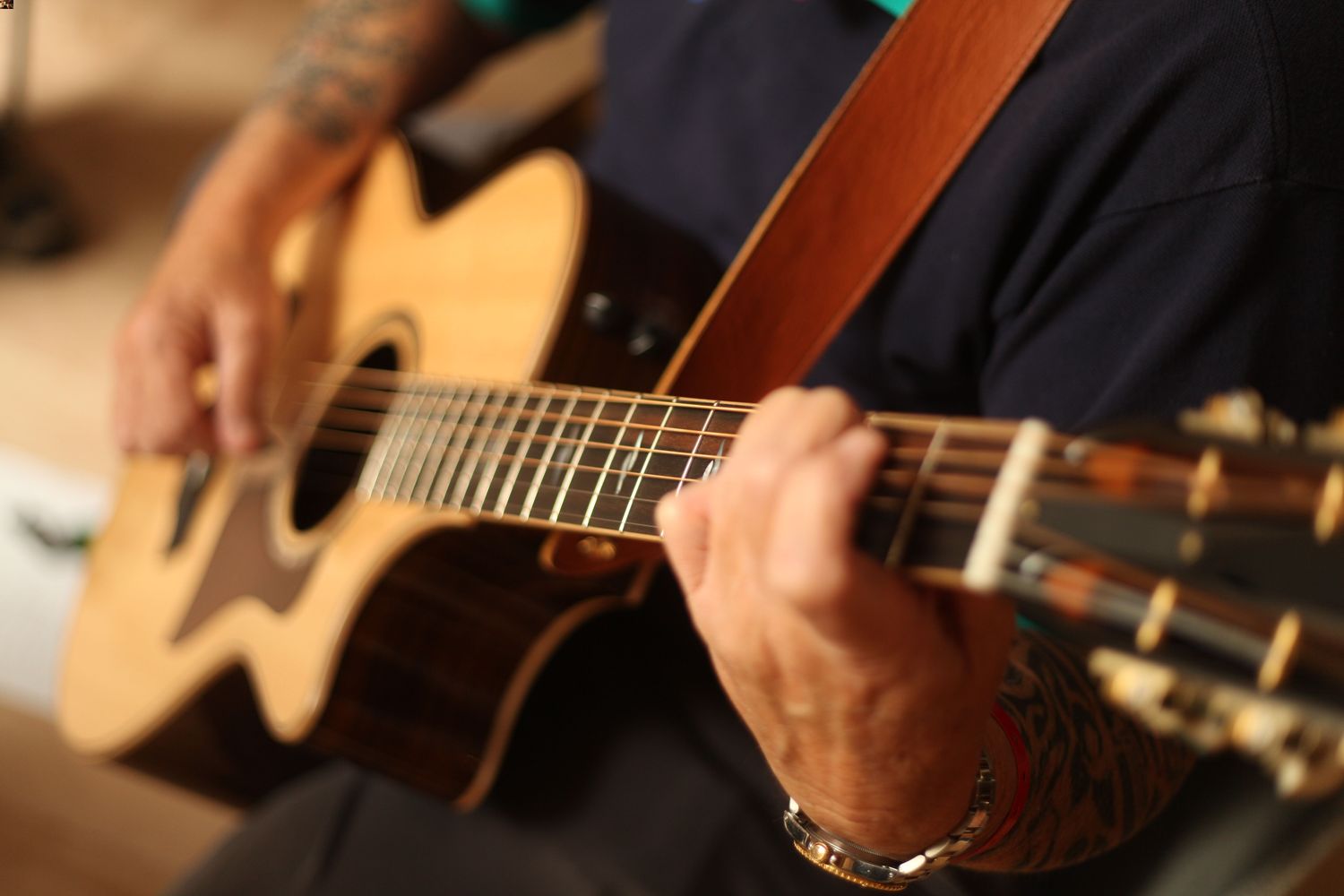Home>Instruments>Guitar>How To Play A Guitar Solo


Guitar
How To Play A Guitar Solo
Published: February 13, 2024
Learn how to play a guitar solo with our step-by-step guide. Master essential techniques and create impressive solos with our expert tips. Perfect for guitar enthusiasts!
(Many of the links in this article redirect to a specific reviewed product. Your purchase of these products through affiliate links helps to generate commission for AudioLover.com, at no extra cost. Learn more)
Table of Contents
Introduction
Playing a guitar solo is an exhilarating and expressive form of musical artistry that captivates both musicians and audiences alike. Whether you're a budding guitarist or a seasoned player looking to enhance your soloing skills, mastering the art of guitar solos can be a deeply rewarding endeavor. A well-executed guitar solo has the power to convey raw emotion, tell a story, and elevate a song to new heights. In this comprehensive guide, we will delve into the essential techniques and concepts that will empower you to craft and deliver captivating guitar solos.
Embarking on the journey to master guitar solos requires dedication, patience, and a willingness to explore the boundless possibilities of musical expression. Throughout this guide, we will explore the fundamental aspects of guitar soloing, including understanding scales and modes, developing technique, utilizing phrasing and dynamics, and improvisation tips. By immersing yourself in these key areas, you will gain the knowledge and insight needed to unleash your creativity and confidently take center stage with your guitar.
Whether you aspire to emulate the blistering solos of rock legends, the soul-stirring improvisations of jazz virtuosos, or the intricate melodies of blues maestros, the principles and techniques outlined in this guide will serve as a solid foundation for your soloing journey. So, grab your guitar, unleash your passion for music, and let's embark on a captivating exploration of the art of guitar solos.
Understanding Scales and Modes
At the core of crafting captivating guitar solos lies a deep understanding of scales and modes. Scales form the melodic and harmonic framework upon which solos are built, while modes add color, emotion, and depth to your improvisations. Familiarizing yourself with various scales, such as the pentatonic, blues, major, and minor scales, is essential for navigating the fretboard with confidence and creating melodic phrases that resonate with listeners.
When delving into scales, the pentatonic scale is a great starting point for aspiring soloists. Its versatile and emotive nature makes it a staple in various musical genres, from blues and rock to jazz and beyond. Understanding the intervals and patterns of the pentatonic scale across the fretboard empowers you to effortlessly weave melodic lines and expressive licks into your solos.
Furthermore, delving into modes opens up a world of tonal possibilities for your solos. Each mode possesses its own unique sound and character, allowing you to evoke different moods and emotions in your improvisations. From the ethereal allure of the Dorian mode to the exotic flair of the Phrygian mode, incorporating modes into your soloing arsenal adds depth and intrigue to your musical storytelling.
As you embark on your exploration of scales and modes, take the time to internalize their sounds and patterns. Practice moving fluidly between different positions on the fretboard, experiment with bending and vibrato to infuse your notes with expression, and explore the nuances of each scale and mode to imbue your solos with depth and personality.
Ultimately, a solid grasp of scales and modes serves as the cornerstone of compelling guitar solos, providing you with the harmonic and melodic vocabulary to articulate your musical ideas with clarity and emotion. With this foundation in place, you are poised to elevate your soloing prowess and embark on a journey of sonic self-expression.
Developing Technique
Mastering the art of guitar solos necessitates honing your technical prowess to effortlessly translate musical ideas into captivating performances. Developing a strong and agile technique empowers you to navigate the fretboard with precision, execute intricate passages with finesse, and infuse your solos with expressive nuances.
One fundamental aspect of technique development is finger dexterity and strength. Regular practice routines that focus on exercises such as scales, arpeggios, and chromatic runs can significantly enhance the agility and coordination of your fretting hand. Additionally, incorporating fingerstyle and alternate picking techniques into your practice regimen cultivates versatility and control, enabling you to tackle a diverse range of musical styles and soloing approaches.
Furthermore, paying attention to your picking hand technique is paramount for achieving clarity and articulation in your solos. Experimenting with different pick grips, adjusting your picking angle, and refining your picking motion can refine your tone and precision, allowing you to unleash a spectrum of dynamic and articulate phrases.
As you delve deeper into technique development, don’t underestimate the importance of ear training and listening skills. Cultivating a keen ear for pitch, tone, and phrasing empowers you to intuitively translate musical ideas from your mind to your instrument. Transcribing solos by your favorite guitarists, dissecting their phrasing and nuances, and incorporating elements of their playing into your own style can enrich your musical vocabulary and inspire fresh approaches to soloing.
Ultimately, the journey of developing technique is an ongoing and rewarding pursuit. Embrace deliberate and focused practice, explore diverse playing styles and genres, and remain open to continuous refinement and growth. By nurturing a well-rounded and adaptable technique, you will unlock the potential to convey your musical imagination with clarity, precision, and emotive power in your guitar solos.
Utilizing Phrasing and Dynamics
Phrasing and dynamics are the soulful essence that breathe life into guitar solos, shaping the narrative and evoking emotional resonance. Crafting compelling solos extends beyond technical proficiency; it involves harnessing the interplay of notes, rests, and dynamic nuances to articulate a musical story that captivates the listener’s imagination.
Central to effective phrasing is the art of creating melodic motifs and musical sentences that convey a sense of continuity and expression. By incorporating bends, slides, hammer-ons, and pull-offs, you infuse your phrases with a vocal-like quality, imbuing them with character and emotion. Moreover, exploring the use of vibrato and sustain adds depth and warmth to individual notes, allowing them to sing and soar within the sonic tapestry of your solos.
Equally vital is the mastery of dynamics – the subtle variations in volume, attack, and tonal intensity that imbue your solos with an ebb and flow of tension and release. Experimenting with crescendos and diminuendos, utilizing palm muting for a more subdued articulation, and judiciously deploying accents and staccato notes all contribute to the dynamic contour of your solo, creating a captivating sonic journey for the listener.
Moreover, embracing the concept of call and response within your solos adds a conversational and interactive dimension to your playing. By juxtaposing assertive phrases with more introspective and contemplative passages, you create a musical dialogue that invites the listener to engage with the emotional narrative of your solo, fostering a deeper connection and resonance.
As you explore the realm of phrasing and dynamics, remember that silence is as impactful as sound. Embracing moments of space and restraint within your solos allows for tension to build and release, amplifying the emotional impact of your musical storytelling. Cultivating an intuitive sense of when to let notes breathe and when to unleash a torrent of fervent expression is a hallmark of seasoned guitar soloists.
By mastering the interplay of phrasing and dynamics, you infuse your guitar solos with a rich tapestry of emotion, narrative depth, and sonic allure, elevating your musical expression to new heights and leaving an indelible imprint on the hearts and minds of your audience.
Improvisation Tips
Embarking on a journey of improvisation opens the door to boundless creative expression, allowing you to paint vivid musical landscapes with the strokes of your guitar. Whether you’re jamming with fellow musicians or taking a solo spotlight, honing your improvisational skills empowers you to channel spontaneity and musical intuition into captivating performances.
One foundational principle of improvisation is embracing the spirit of musical conversation. Approach your improvisational endeavors as a dialogue with the music, allowing your phrases to respond and interact with the underlying harmonic and rhythmic backdrop. By listening attentively to the musical context and engaging in a dynamic exchange of musical ideas, you breathe life into your improvisations, fostering a sense of musical storytelling and cohesion.
Moreover, cultivating a diverse vocabulary of musical motifs and licks equips you with an arsenal of melodic and rhythmic ideas to draw upon during improvisation. While technical proficiency is valuable, the ability to craft memorable and emotive musical phrases lies at the heart of impactful improvisation. Experiment with varying rhythmic patterns, explore chromatic embellishments, and imbue your improvisations with a blend of familiar motifs and fresh, spontaneous expressions.
Embracing the element of surprise within your improvisations adds an element of intrigue and excitement to your solos. Introduce unexpected twists and turns, explore unconventional note choices, and allow your musical instincts to guide you into uncharted sonic territories. This sense of adventurous spontaneity infuses your improvisations with a sense of vitality and unpredictability, captivating both yourself and your audience.
Furthermore, fostering a deep awareness of the underlying chord progressions and harmonic structure empowers you to navigate the musical landscape with confidence and coherence. By internalizing the relationships between scales, arpeggios, and chord tones, you gain the freedom to weave intricate melodic pathways that resonate harmoniously with the music, elevating your improvisations to a harmonically rich and melodically compelling level.
Ultimately, the art of improvisation is a celebration of musical freedom and expression. Embrace the spontaneity, embrace the musical conversation, and embrace the boundless creativity that improvisation affords. With each improvised passage, you breathe life into the music, infusing it with your unique voice and musical identity, and forging an unforgettable connection with your audience.
Conclusion
Congratulations on embarking on this enriching exploration of the art of guitar solos. Throughout this guide, we have delved into the essential elements that form the bedrock of compelling soloing, from understanding scales and modes to honing technique, crafting emotive phrasing, and embracing the spontaneity of improvisation. As you continue on your journey as a guitarist, remember that the art of crafting captivating guitar solos is a deeply personal and expressive endeavor, one that invites you to infuse your music with your unique voice and emotional resonance.
Mastering the intricacies of scales and modes provides you with a melodic and harmonic palette from which to draw inspiration and construct compelling musical narratives. Developing a strong and versatile technique empowers you to navigate the fretboard with precision and finesse, while also expressing the depths of your musical imagination. Utilizing phrasing and dynamics allows you to imbue your solos with emotion, storytelling, and sonic allure, captivating listeners with each note and phrase.
Furthermore, embracing the spirit of improvisation invites you to engage in a dynamic musical dialogue, fostering spontaneity, creativity, and a deep connection with the music and your audience. As you continue to refine your skills and explore the vast landscape of guitar solos, remember that each note you play is an opportunity to express your musical identity and connect with others on a profound emotional level.
So, pick up your guitar, immerse yourself in the boundless possibilities of musical expression, and let your passion for music guide you as you embark on the exhilarating journey of crafting captivating guitar solos. Whether you find yourself lost in the fervor of a blistering rock solo, the introspective musings of a jazz improvisation, or the soul-stirring melodies of a blues lament, may your guitar solos resonate with authenticity, emotion, and an unwavering commitment to musical storytelling.
With each note, each bend, and each expressive phrase, you breathe life into the music, leaving an indelible imprint on the hearts and minds of your audience. Your guitar becomes a vessel for your innermost thoughts and emotions, transcending language and speaking directly to the soul. Embrace the journey, embrace the music, and embrace the transformative power of crafting captivating guitar solos.











